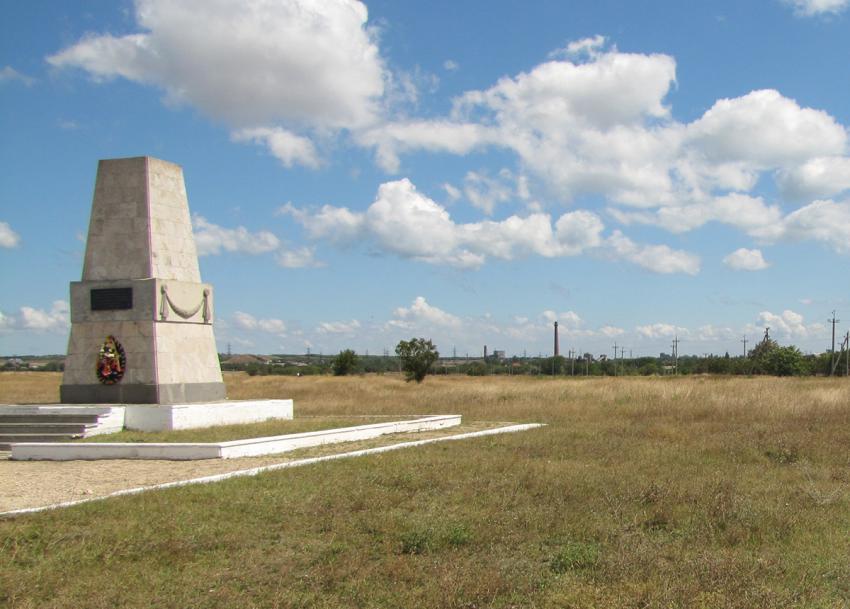Until the 20th century, the Krymchaks did not intermarry with Ashkenazi Jews. Twenty years of Soviet rule resulted in a certain blurring of the ethnic, linguistic, and religious segregation of the Krymchaks, and cases of intermarriage – not only with Ashkenazi Jews, but also with the linguistically close Crimean Tatars – were registered. The Krymchak population numbered 6,383 in 1926, and according to a later scholarly estimate, some 6,500 Krymchaks lived in the USSR on the eve of World War II. During the 1920s and 1930s, more than a quarter of the Krymchaks shifted from Judeo-Crimean Tatar to Russian.
In the immediate aftermath of the German invasion of the Crimea in mid-October 1941, the Krymchaks were exempted from Nazi anti-Jewish measures. However, the SS forces operating in the peninsula carried out research into the Jewish background of the Krymchaks, completing it in early December 1941. Its conclusions underscored the Jewish ethnic origin of the Krymchaks, while also citing the Krymchaks’ own assertion that they were “a branch of the Tatar people.” The report emphasized that they had kept their faith, which was not referred to as Jewish. Also, the group tended to intermarry with the Tatars. The SS researchers gave the decision-makers in Berlin sufficient leeway for any verdict. Sometime between December 5 and 8-9, 1941, Himmler ordered the extermination of the Krymchaks.
The first killing operations against the community were carried out in the first week of December 1941, shortly after the murder of most of the local Ashkenazi Jews. In those cases, the whole procedure of registering, assembling, and then exterminating the Krymchaks did not differ from the treatment meted out to the Crimean Ashkenazim. However, in other instances, the roundup of the Krymchaks would not be announced until much later (in Feodosia, there was a delay of twelve days; in Karasubazar, the corresponding period lasted as many as forty-five days; in Kerch, it lasted thirty-five days), which gave them more time to learn the fate of their Ashkenazi brethren, who had been ‘resettled’ (the Nazi euphemism for ‘murdered’) earlier. The longer interval between the roundups of the Ashkenazis and the Krymchaks may be attributed to the shortage of German manpower and to the protracted investigation of the Krymchaks in Kerch.
The available documents enable us to reconstruct the organized activity of the Krymchak community only in the town of Kerch. Its Krymchak inhabitants were exempted from the special ‘Jewish’ registration introduced in mid-November 1941. However, very soon the policy was reversed, and the Krymchaks were ordered to register on November 28, 1941. 826 people complied with this order.
By that time, the local German commanders had already received the order to kill the Krymchaks in Kerch, in line with the policy applied to this group elsewhere in the peninsula at this point. In the meantime, five Krymchak intellectuals, who had learned about the ongoing extermination of the Ashkenazi Jews, gathered on November 25-26 and decided to present the occupying authorities with printed materials and a handwritten article titled “Krymchaks” by Isaac Kaia, a Krymchak scholar and educator. These texts were supposed to prove the community’s non-Jewish origins. That decision was carried out; the manuscripts were examined, and the head of the employment center was instructed to register the Krymchaks like the rest of the non-Jewish residents.
As a result, the local German command suspended the discriminatory measures against the Krymchaks in Kerch and forwarded the inquiry to Berlin. This renewed investigation lasted several weeks, but by the end of December 1941, the old policy vis-à-vis the Krymchaks was reiterated. They were ordered to assemble on January 3 or 4, 1942, with the obvious purpose of extermination. However, in late December 1941, Soviet marines landed in the area and liberated the town. Thanks to them, hundreds of local Krymchaks were spared from annihilation. However, only 200-300 of the Krymchaks evacuated; the Jews who were left in Kerch perished after the Germans had retaken the town in May 1942.
In 1942, the persecution and extermination of the Krymchaks extended to the rural areas and the POW camps. During the final wave of the large-scale extermination operations carried out by the Germans after the seizure of the remaining Soviet enclaves of Kerch (May 1942) and Sevastopol (July 1942), there was no trace of the former special treatment of the Krymchaks (in contrast to the Ashkenazi Jews). The remaining members of both groups, the Ashkenazis and the Krymchaks, were gathered at the assembly points and then killed en masse at the same time and in the same places.
The great majority of the Crimean Krymchaks perished during the German occupation of the peninsula. According to calculations made by the Krymchaks themselves, more than 5,500 members of their community were killed by the Germans. Since the Crimea was home to most of the world's Krymchaks, this means that more than 70 percent of their prewar population was exterminated in 1941-1944.







